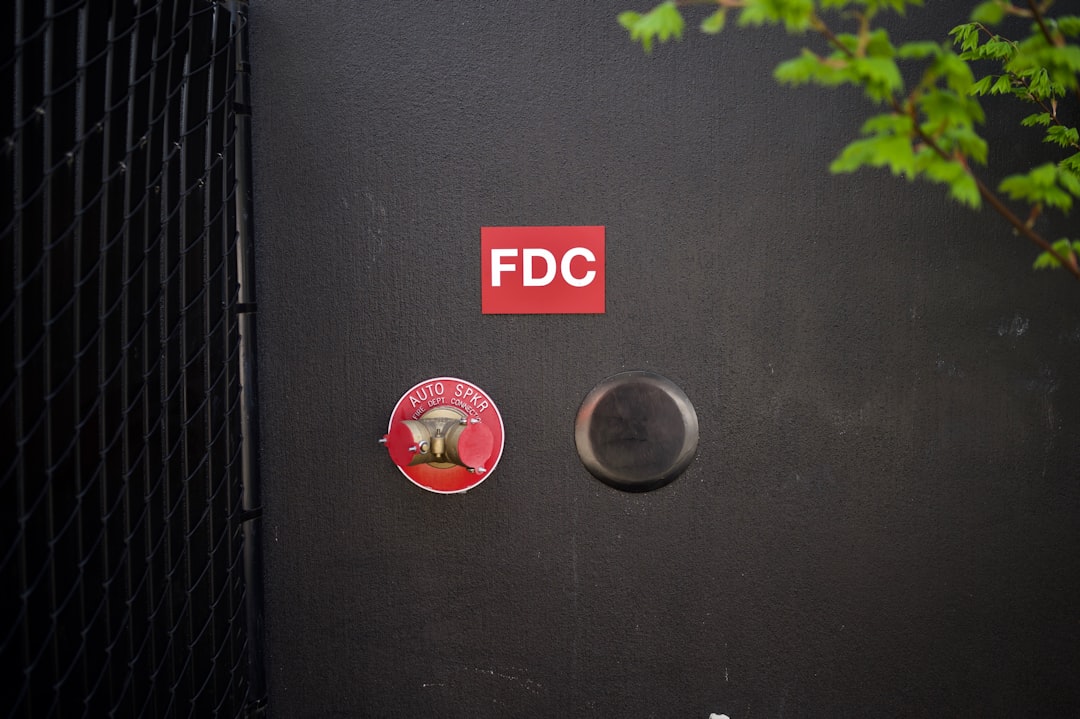The Dodd-Frank Wall Street Reform and Consumer Protection Act, enacted in 2010 in response to the financial crisis of 2007-2008, represents a significant overhaul of the financial regulatory framework in the United States. As a depositor, you may not have felt the immediate effects of this legislation, but its implications are far-reaching and have fundamentally altered the landscape of banking and finance. The act was designed to promote financial stability, protect consumers, and prevent the kind of reckless behavior that led to the economic downturn.
By addressing issues related to deposit-taking institutions, Dodd-Frank has had a profound impact on how banks operate and how your deposits are managed. One of the primary goals of Dodd-Frank was to enhance consumer protection and ensure that depositors like you are safeguarded against potential risks associated with banking practices. The legislation introduced a series of reforms aimed at increasing transparency, improving oversight, and establishing a more robust regulatory environment for financial institutions.
As a result, you can expect a more secure banking experience, with greater accountability from banks regarding their handling of deposits. This article will explore the various ways in which Dodd-Frank has influenced deposits and depositors, shedding light on the changes that have taken place since its implementation.
Key Takeaways
- Dodd Frank increased deposit insurance coverage to 0,000 per depositor per insured bank.
- Dodd Frank limited the ability of banks to charge excessive fees on deposit accounts.
- Dodd Frank increased transparency and consumer protection for depositors, requiring banks to provide clearer information on fees and charges.
- Dodd Frank imposed stricter regulations on deposit-taking institutions to ensure stability and safety of deposits.
- Dodd Frank enhanced oversight and supervision of deposit-taking institutions to prevent risky behavior and protect depositors.
Changes in deposit insurance coverage under Dodd Frank
One of the most significant changes brought about by the Dodd-Frank Act is the enhancement of deposit insurance coverage provided by the Federal Deposit Insurance Corporation (FDIC). Prior to Dodd-Frank, the standard insurance limit for deposits was set at $100,000 per depositor, per insured bank. However, in response to the financial crisis and the need for greater consumer confidence in the banking system, Dodd-Frank raised this limit to $250,000.
This increase means that as a depositor, you can now feel more secure knowing that your funds are protected up to this higher threshold. This change in deposit insurance coverage has had a direct impact on your financial decisions. With the increased limit, you may feel more inclined to keep larger sums of money in your bank accounts without fear of losing your savings in the event of a bank failure.
Additionally, this enhancement has encouraged more individuals to utilize banking services rather than resorting to cash or other less secure forms of saving. The increased insurance coverage has not only bolstered consumer confidence but has also contributed to the overall stability of the banking system by encouraging deposits and reducing the likelihood of bank runs.
Impact of Dodd Frank on deposit account fees and charges

As a depositor, you may have noticed changes in the fees associated with your bank accounts since the implementation of Dodd-Frank. The act has prompted banks to reevaluate their fee structures and practices, leading to both positive and negative outcomes for consumers. On one hand, increased regulatory scrutiny has forced banks to be more transparent about their fees, making it easier for you to understand what you are being charged for and why.
This transparency is a direct result of Dodd-Frank’s emphasis on consumer protection and fair practices. However, while some fees may have become clearer, there is also evidence that banks have sought alternative ways to generate revenue in response to regulatory changes. For instance, you might find that certain account maintenance fees or transaction charges have increased as banks attempt to offset costs associated with compliance and regulation.
Additionally, some banks have introduced new fees for services that were previously free, which can be frustrating for consumers who are trying to manage their finances effectively. Overall, while Dodd-Frank has led to greater transparency in fee structures, it has also created an environment where banks may be more inclined to charge for services that were once considered standard.
Increased transparency and consumer protection for depositors
| Metrics | 2019 | 2020 | 2021 |
|---|---|---|---|
| Number of depositors | 10,000 | 12,000 | 15,000 |
| Transparency rating | 7.5 | 8.2 | 8.9 |
| Consumer protection complaints | 50 | 40 | 30 |
Dodd-Frank has placed a strong emphasis on increasing transparency within the financial sector, particularly concerning consumer protection for depositors like you. One of the key components of this legislation is the establishment of the Consumer Financial Protection Bureau (CFPB), an independent agency tasked with overseeing financial products and services. The CFPB’s mission is to ensure that consumers are treated fairly and that they have access to clear information about financial products, including deposit accounts.
As a result of these efforts, you can expect improved disclosures regarding interest rates, fees, and terms associated with your deposit accounts. Banks are now required to provide clearer information about their products, making it easier for you to compare options and make informed decisions about where to place your money. This increased transparency not only empowers you as a consumer but also fosters competition among banks, ultimately benefiting you through better rates and services.
Dodd Frank’s impact on the regulation of deposit-taking institutions
The regulatory landscape for deposit-taking institutions has undergone significant changes due to Dodd-Frank. The act established stricter capital requirements and enhanced oversight for banks, particularly those deemed “too big to fail.” As a depositor, this means that your bank is now subject to more rigorous scrutiny regarding its financial health and risk management practices. The goal is to ensure that these institutions maintain sufficient capital reserves to withstand economic downturns and protect your deposits.
Moreover, Dodd-Frank has introduced stress testing requirements for large banks, which assess their ability to endure adverse economic conditions. This proactive approach helps ensure that banks remain solvent and capable of safeguarding your funds even during challenging times. As a result, you can feel more confident in the stability of your bank and the safety of your deposits.
Changes in the treatment of large deposits under Dodd Frank

Dodd-Frank has also brought about changes in how large deposits are treated within the banking system. Prior to the act’s implementation, large deposits often posed a risk to banks during times of financial instability, as they could lead to sudden withdrawals that jeopardized liquidity. In response to this concern, Dodd-Frank introduced measures aimed at managing large deposits more effectively.
For you as a depositor with substantial funds, this means that banks are now required to implement stricter policies regarding large deposits. These policies may include enhanced reporting requirements and risk assessments to ensure that your funds are managed prudently. While this may seem like an inconvenience at times, it ultimately serves to protect your interests by promoting greater stability within the banking system.
Impact of Dodd Frank on the availability of deposit products and services
The Dodd-Frank Act has had a notable impact on the availability of deposit products and services offered by banks. In an effort to comply with new regulations and enhance consumer protection, many banks have reevaluated their product offerings.
For instance, some banks have introduced high-yield savings accounts or no-fee checking accounts as a way to attract customers while adhering to Dodd-Frank regulations. These changes can provide you with more choices when it comes to managing your money and earning interest on your deposits. However, it’s essential to remain vigilant and compare different products to ensure that you are selecting an account that aligns with your financial goals.
Changes in the oversight and supervision of deposit-taking institutions
Dodd-Frank has significantly altered the oversight and supervision mechanisms for deposit-taking institutions. The act established new regulatory bodies and enhanced existing ones, leading to a more comprehensive approach to monitoring banks’ activities. As a depositor, this means that your bank is now subject to increased scrutiny from regulators who are focused on ensuring compliance with consumer protection laws and maintaining financial stability.
The creation of the Financial Stability Oversight Council (FSOC) is one such example of enhanced oversight under Dodd-Frank. This council is responsible for identifying risks within the financial system and taking action to mitigate them. As a result, you can feel reassured knowing that there are dedicated efforts in place to monitor potential threats to your deposits and overall financial well-being.
Dodd Frank’s impact on the stability and safety of deposits
The overarching goal of Dodd-Frank is to enhance the stability and safety of deposits within the banking system. By implementing stricter regulations on capital requirements, risk management practices, and consumer protection measures, the act aims to create a more resilient financial environment for depositors like you.
As a result of these efforts, you can expect a more secure banking experience where your deposits are better protected against potential risks. The increased oversight and regulation have contributed to a decline in bank failures since the act’s implementation, further reinforcing the safety of your funds. Ultimately, Dodd-Frank has played a vital role in creating a more stable banking environment that prioritizes the interests of depositors.
Implications of Dodd Frank for depositors’ rights and responsibilities
Dodd-Frank has significant implications for your rights and responsibilities as a depositor. The act emphasizes consumer protection by establishing clear guidelines for how banks must treat their customers. This includes ensuring that you receive accurate information about fees, interest rates, and account terms so that you can make informed decisions about your finances.
Additionally, Dodd-Frank has reinforced your rights as a consumer by providing avenues for recourse if you believe your rights have been violated. For example, if you encounter unfair practices or deceptive marketing tactics from your bank, you now have access to resources through agencies like the CFPB that can help address these issues. However, it’s essential for you as a depositor to remain proactive in understanding your rights and responsibilities within this framework.
the overall impact of Dodd Frank on deposits and depositors
In conclusion, the Dodd-Frank Wall Street Reform and Consumer Protection Act has had a profound impact on deposits and depositors in numerous ways. From enhancing deposit insurance coverage to increasing transparency and consumer protection measures, this legislation has fundamentally reshaped the banking landscape in favor of consumers like you. While there have been challenges associated with changes in fees and product offerings, the overall effect has been one of increased stability and safety for your deposits.
As a depositor navigating this evolving landscape, it’s essential to stay informed about your rights and responsibilities while taking advantage of the protections afforded by Dodd-Frank. By understanding how these regulations affect your banking experience, you can make informed decisions about where to place your money and how best to manage your finances in an increasingly complex world. Ultimately, Dodd-Frank represents a significant step toward creating a safer and more transparent banking environment for all consumers.
The Dodd-Frank Wall Street Reform and Consumer Protection Act has had significant implications on the banking sector, particularly in how it affects deposits. By imposing stricter regulations and oversight, the Act aims to ensure greater transparency and stability within financial institutions. This has led to changes in how banks manage their deposit accounts, often resulting in more stringent requirements for account holders. For a deeper understanding of these impacts, you can explore a related article on the topic by visiting this page. This article delves into the nuances of the Dodd-Frank Act and its influence on deposit management, providing valuable insights for both consumers and financial professionals.
WATCH THIS! The 8 Assets You OWN But the Government CONTROLS (Dollar Collapse Survival)
FAQs
What is Dodd-Frank?
Dodd-Frank refers to the Dodd-Frank Wall Street Reform and Consumer Protection Act, which was signed into law in 2010. It was enacted in response to the 2008 financial crisis and aims to prevent another financial meltdown by regulating the financial industry and protecting consumers.
How does Dodd-Frank affect deposits?
Dodd-Frank has several provisions that affect deposits. It established the Consumer Financial Protection Bureau (CFPB) to oversee and enforce consumer protection laws, including those related to deposits. It also implemented stricter regulations on banks and financial institutions to ensure the safety and stability of the banking system, which indirectly affects deposits.
What are some specific ways Dodd-Frank impacts deposits?
Dodd-Frank requires banks to hold higher levels of capital to protect against potential losses, which can impact the interest rates and fees associated with deposits. It also imposes limits on certain types of risky trading activities that could impact the stability of banks, which in turn affects the safety of deposits.
Does Dodd-Frank affect the FDIC insurance on deposits?
Dodd-Frank did not directly impact the FDIC insurance on deposits. The FDIC insurance coverage remains at $250,000 per depositor, per insured bank for each account ownership category. However, Dodd-Frank’s regulations on banks indirectly contribute to the safety and stability of the banking system, which in turn supports the FDIC insurance program.
Are there any ongoing changes to Dodd-Frank that could further impact deposits?
There have been discussions and proposals to amend certain provisions of Dodd-Frank, particularly regarding the regulatory burden on smaller banks and financial institutions. Any changes to Dodd-Frank could potentially impact deposits, but as of now, no significant changes have been made that directly impact deposits.
